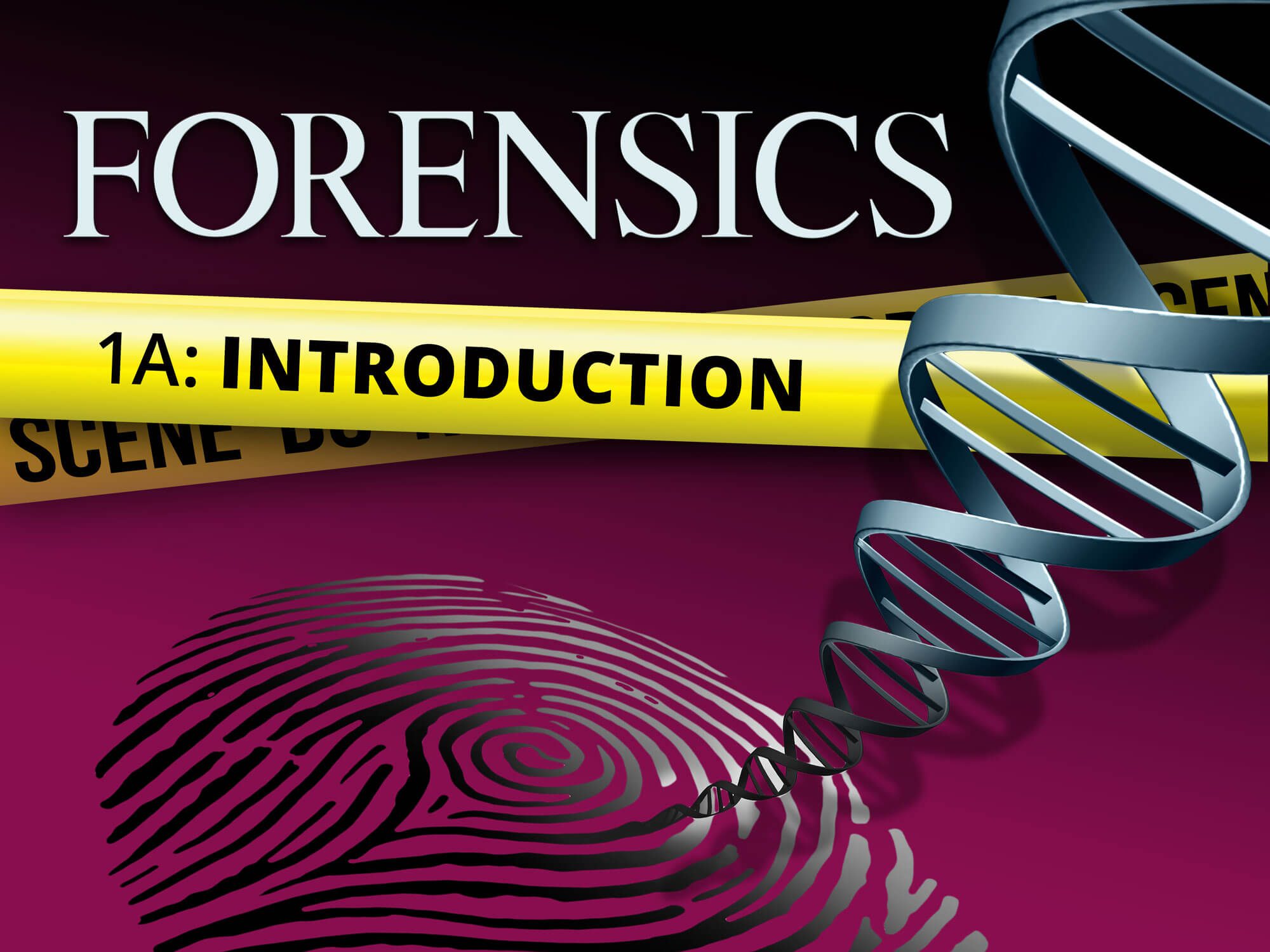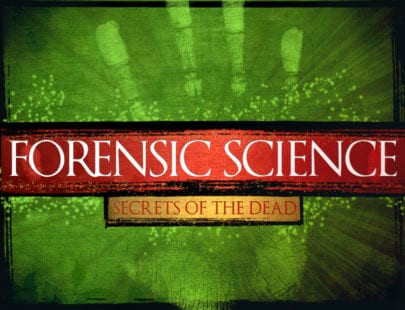
Forensics 1a: Introduction
Our notions of forensics are often fictionalized, containing fantastic notions of what forensic science really is. In this course, you’ll explore the truth behind the science from its history to its modern-day developments. You will learn how detectives conduct thorough investigations as well as common equipment and methods that are used throughout the field. Finally, you will learn about collecting and analyzing the most common types of evidence found at a crime scene and how they guide investigators to answers. Let’s track your interests and continue your pursuit of justice through science!
Units at a Glance
Unit 1: Investigating Crime: What’s It All About?
When you watch crime television shows or movies, there is usually one or two main investigators who handle all of the evidence from start to finish. They seem to have an endless amount of expertise and give results from multiple areas of study. But that’s not how forensics works in the real world. It takes years to become an expert in a particular area of study and teams of scientists to collect, analyze, and present the evidence. So how did we get here, and what are the expectations and roles of forensics investigators? Let’s find out.
What will you learn in this unit?
- Describe how forensic science grew and changed over time
- Summarize important recent developments in forensic science
- Understand the professional expectations of forensic scientists
- Explain the consequences of unethical behavior
- Distinguish between criminalistics and criminology
- Identify the roles of crime scene investigators
Unit 2: Think Like a Scientist
Where would forensic science be without science? It gives the practice of forensics a specific way of drawing conclusions that we can depend on. It also pushes scientists to be consistent, to challenge assumptions, and to incorporate the work of other scientists. Fortunately, science has also led to many kinds of high-tech equipment that helps scientists reach the kind of definitive conclusions that criminal justice requires. Science shows us the way and gives us the tools to get the job done.
What will you learn in this unit?
- Explain the importance of the scientific method to forensic science
- Make keen observations at a crime scene
- Ask a variety of questions and make strong hypotheses
- Describe how various equipment is used to test hypotheses
- Suggest the best way forward in a case based on the results of tests
Unit 3: Act Like a Scientist
Forensic science is all about data, but let’s get more specific. There are different kinds of data and many ways and places to collect it. Forensic scientists also use a variety of tools and methods to analyze and communicate data and interpretations of data. Even the way that forensic scientists think will shape these reports, so it’s key to use a range of critical thinking skills. Standardization helps with all stages of the process, from documenting the scene to writing reports that can stand up in court decades later. There can be a lot to keep track of, so let’s see how to organize the chaos.
What will you learn in this unit?
- Demonstrate safe practices during laboratory and field investigations
- Employ a range of tools and methods in the collection and analysis of data
- Create documents that clearly show data and interpretations of data
- Examine data in a neutral manner that minimizes common biases
Unit 4: At the Crime Scene
When a crime occurs and the police are called, a crime scene investigator will arrive to document the scene and collect evidence. There are strict rules and clear expectations when it comes to the collection and preservation of evidence. Their importance cannot be overstated. Any wrong step along the way can spoil an investigation. They keep the work within the bounds of the Constitution. They make sure the current team as well as future investigators can do their work. In short, they ensure justice and fairness for all involved.
What will you learn in this unit?
- Conduct legal searches
- Search a crime scene
- Document a crime scene
- Secure evidence
- Communicate with a team of forensic scientists
Unit 5: Back at the Lab
Much of a forensic scientist’s job takes place in a lab, but what exactly do they do there? In short, they build cases. Indeed, given the right equipment and an eye for detail, forensic scientists can build cases from tiny elements invisible to the human eye. It is amazing how much information they can gather from samples of trace evidence. Whether it is reading glass to tell where a bullet came from or confirming that paint traces on a suspect’s clothing match those found at the crime scene, forensic scientists bring technology to bear to make a big deal out of little details.
What will you learn in this unit?
- Differentiate among types of glass and recognize the qualities of these types
- Identify the elements of paint and how to collect samples at a crime scene
- Distinguish types of fiber and recognize their role in crime scene investigations
- Recognize the structure of hair and discrete elements that help identify the source of the hair
- Determine the appropriate microscope for a variety of types of trace evidence
Unit 6: Fingerprint Identification
We’ve all seen it on television and in movies. The suspect brushes their finger across a table, leaving a single fingerprint. Investigators spot it immediately, submit it to a database, and are knocking down the suspect’s door after the first ad break. Real life is a bit more complicated than that, but the steps aren’t far off. Indeed, collecting and analyzing fingerprints is an essential part of forensic science. It’s led investigators to countless suspects. To do it well, they need to first locate fingerprints. Then, depending on the surface, they’ll use a method of their choosing to capture them. Back in the lab, they’ll determine exactly what kind of print they have and whether a match can be found in the national database. It’s a bit slower than TV, but fingerprints really do lead investigators to suspects’ doors.
What will you learn in this unit?
- Distinguish and categorize different types of fingerprints
- Collect and process fingerprints and other imprints from a crime scene
- Analyze and compare fingerprints and other imprints in a lab
- Describe the history and role of databases in making biometric data available to law enforcement
Unit 7: Working with Biological Fluids
Forensic scientists need to know how to handle blood at the scene. Blood shows up in a variety of locations and quantities, and these differences impact how blood is collected and stored for analysis. But knowing blood science well is only a start; there are other biological fluids to collect from a scene as well. Because this is a profession based on solid evidence, the identification, collection, and storage of bodily fluid evidence requires care and attention to make sure all evidence makes it back to the lab in the best shape for testing.
What will you learn in this unit?
- Describe the major characteristics of human blood
- Explain how alcohol is processed in the body and impacts normal functioning
- Identify and collect blood and other bodily fluids from a crime scene
- Move blood and other bodily fluids to a lab in order to carry out more detailed tests and ensure proper storage
Unit 8: Analyzing Blood
What looks like a messy crime scene to the untrained eye is actually a wealth of information to the forensic scientist. The patterns left behind through the physics of the event leave a story that can be retold to discover all kinds of details about what actually happened. The trained eye can discern everything, from the kind of weapon and the intensity of the strike, to the movements of the victim and assailant. In this case, we’re going to look specifically at the blood patterns left behind for the forensic scientist to interpret.
What will you learn in this unit?
- Describe what the characteristics of blood at a crime scene can reveal about crimes
- Use patterns of blood and blood drops to reveal likely past actions
- Document blood at the crime scene
- Collaborate effectively
Required Materials
Physical
- Bag of groceries
- Calculator
- Clear adhesive tape
- Cloth
- Coat
- Cooking scale
- Cutting board
- Digital camera
- Digital thermometer
- Drinking glass
- Droplet dispenser
- Flashlight
- Glasses
- Gloves
- Graduated cylinder
- Kitchen knife
- Magnifying glass
- Masking tape
- Measuring tape
- Metric ruler
- Nitrile gloves
- Paper (3 sheets)
- Paper plates (5)
- Pencil
- Piece of fabric
- Piece of fruit
- Printer
- Ruler
- Sanitizer
- Sealable plastic bag
- Simulated blood
- Sponge
- Spray bottle
- Tweezers
- Video recording device
- Writing supplies
Software
- Google Docs (requires login)
- Word processing software
Other
- Helper
Optional
- 70 percent isopropyl sanitizer
- Art supplies
- Audio recording device
- Dissection tray
- Goggles
- Graphic design software
- Lab coat
- Presentation software
- Scalpel
- Stereo microscope



